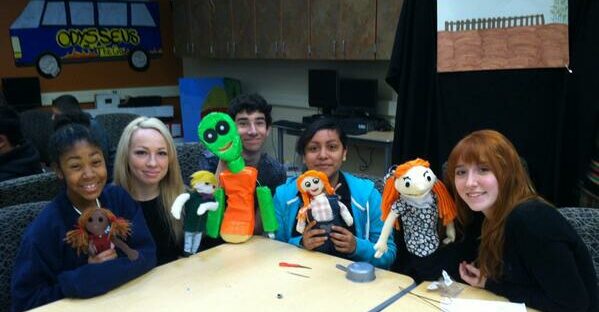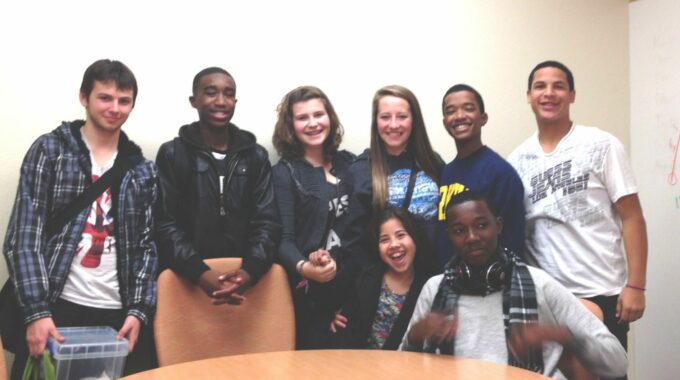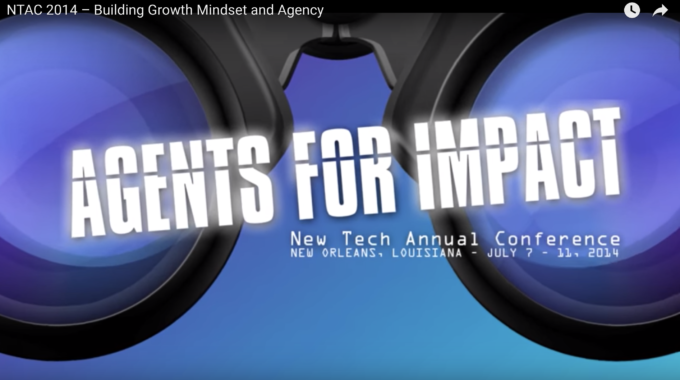
Build An Independent Study Project Library
Traditionally in education, teachers create units of study and projects for their classes. It’s time to flip that dynamic if we seek effective, engaging independent study opportunities.
Instead of individual teachers designing projects for individual courses, implement a schoolwide resource library full of projects. Then, think about about how to create independent study classes for projects.
Independent Study provides the flexibility with school schedules and content. Assemble a team of educators who can determine what types of projects might be highly engaging. Then take the time to create a class entirely around that one project. Include not only a project outline, but advice from teachers — what to do, what not to do, and how to proceed if the student gets stuck. Add a “Level Up” feature to accommodate advanced students or those at a higher grade level. Design one assessment rubric that includes the “Level Up” elements. The course project description should speak to both the student and their parents.
One project + one assessment tool = serves students at any grade or skill level.
It’s Work Worth Investing In
Building your school Independent Study project library sounds like a lot of work. So accomplish it gradually over time. Begin with the favorite units or projects already created, and modify them to meet the project course description outlined above. Ideally, school leaders provide stipends to a curriculum design committee with different subject matter expertise who collaborate to create new project courses to add to the school library. Create all projects so that they can be reused by different students for several years.
Very often the things that school leaders believe can’t be done due to policy restrictions are not actually policy. It’s just the way it’s always been done. Rethink your school’s approach to Independent Study.
Tweet
The ROI (Return on Investment) once you’ve implemented a schoolwide Project Library occurs in two primary ways.
First ROI: Currently Enrolled Students
For example, a student will miss school due to extended illness or some kind of travel. Don’t lose attendance revenue! Instead, invite the student to select a project from the Independent Study resource library that sparks their interest.
A school administrator then generates a master agreement (or whatever form your policy for independent study mandates), and the teacher of record simply signs off. A vetted and deliberately designed project library makes it easy for everyone involved.
No more hastily created master agreements largely comprised of reading assignments and quizzes. Instead, while not physically in school, students learn integrated subject matter through an engaging project. When students return to school, they will have tangible evidence of what they learned while they were absent. Although they may have not completed precisely the same work as their classmates, the important thing is that they will have used their time well for learning. It’s a trade-off worth pursuing.

Second ROI: Adding New Students
Increase your schools total enrollment by tapping into a homeschool base. Nationally, homeschool parents seek co-learning opportunities for their children. Although these families don’t seek traditional attendance at a brick and mortar school, they are hungry for meaningful connections and ideas for engaging, rigorous and relevant projects.
Your school’s Independent Study Project Library is intellectual property. Use it to make an even larger impact on student lives. If you let homeschool families know that you offer co-learning independent study, you may be delighted by the level of interest.
Many homeschool parents seek autonomy without isolation. Some desirable elements to attract their enrollment include:
- Engaging projects with integrated subject matter and instructions they can refer to for a successful implementation with their own child.
- Advice from others who also have launched the same project assignment. What worked? Where did it get “messy”? What did other teachers or parents do to re-ignite the students’ learning if their interest started to wane? What are some variations and additional “Level Ups” or scaffolds?
- Invitations to monthly meet ups where they can connect to other parents or school-based educators. Meet up theme ideas include: Students show casing their projects, participation in field trips or new project launches, and even collaboration to design new courses for the existing project library.
Start thinking differently about Independent Study. Re-read your district or state policy. Very often the things that school leaders believe can’t be done due to policy restrictions are not actually policy. “It can’t be done because it’s not allowed” in fact becomes “It can be done, but no one else has done it before.” Be the first. Give a new approach a try.
Clover Education LLC has worked with schools all types of K-12 schools, districts, and homeschool families to implement amazing independent study!



